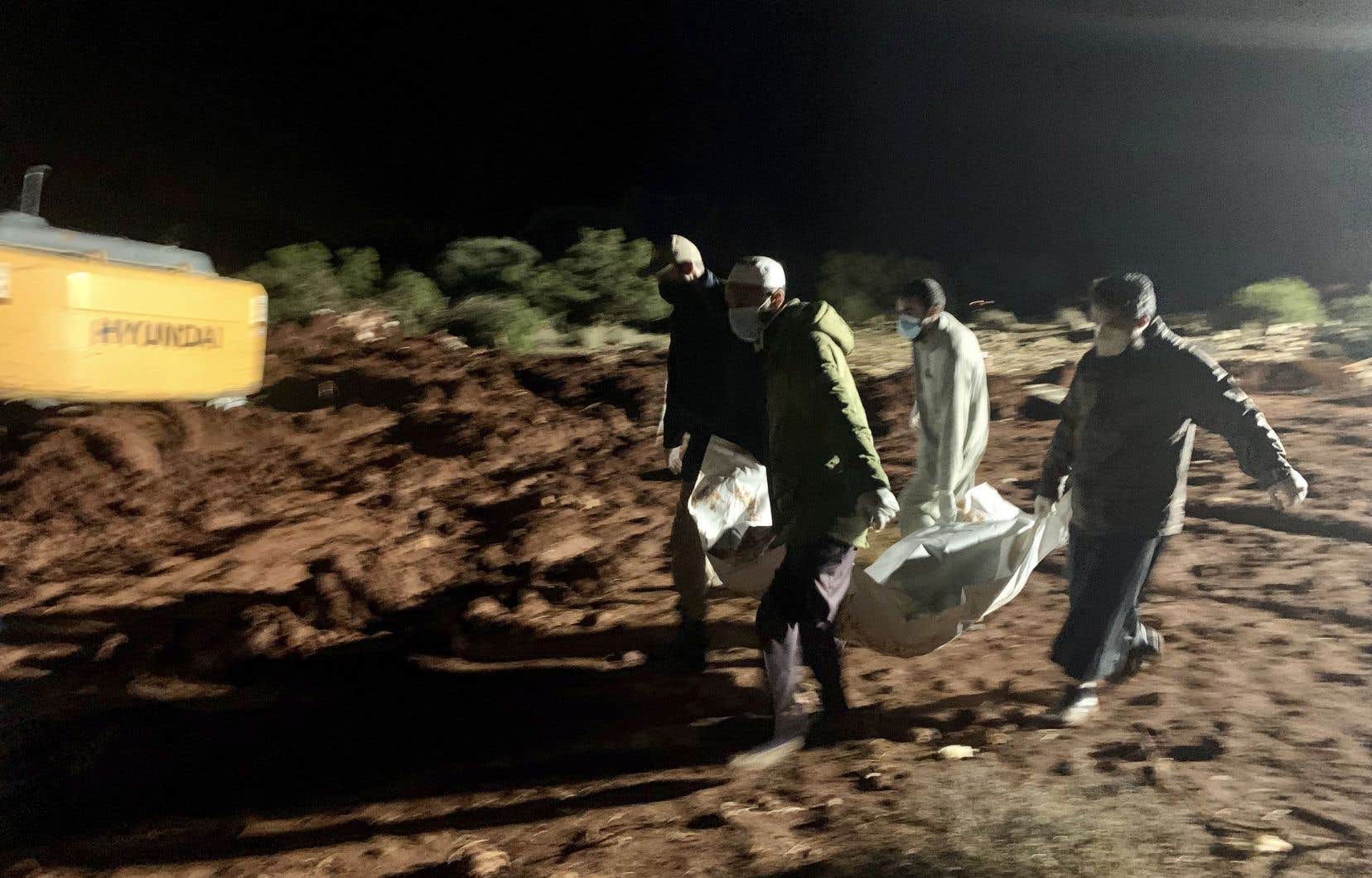At least 30,000 people have been displaced in Derna, the International Organization for Migration (IOM) said on Wednesday, after devastating floods caused by Storm Daniel left thousands dead and missing in this Libyan coastal town. according to the authorities.
Given the difficult access to this town of 100,000 inhabitants, in eastern Libya, uncertainties still remain over the exact number of victims of the disaster.
Cut roads, landslides and floods prevented relief from quickly reaching the population who had to manage by rudimentary means to recover bodies buried by the dozens in mass graves, according to images posted on social networks .
The IOM reported more than 30,000 displaced in Derna as well as 3,000 in al-Bayda and more than 2,000 in Benghazi, other cities further west.
The IOM explained that Derna was now only accessible via two entrances to the south (out of the usual seven). Widespread power outages and telecommunications network disruptions are limiting communications, she said.
“Huge explosion”
While the country has been plunged into chaos since the death of dictator Muammar Gaddafi in 2011, divided between East and West, the authorities of the rival camps speak of “thousands” of deaths.
Osama Ali, spokesperson for the Libyan “Rescue and Emergency Service” under the internationally recognized government in Tripoli, told AFP on Tuesday that the floods had left “more than 2,300 dead” and around 7,000 injured in Derna. , while more than 5,000 people are missing.
An official from the International Federation of Red Cross and Red Crescent Societies (IFRC) reported an “enormous” number of deaths which could number in the thousands, with 10,000 missing.
Since the great earthquake which shook the town of al-Marj (east) in 1963, it is the worst natural disaster experienced by Cyrenaica, the eastern province of Libya.
On Sunday afternoon, Storm Daniel reached the eastern coast of Libya, hitting the metropolis of Benghazi before heading east towards the towns of Jabal al-Akhdar, such as Shahat, al-Marj, al-Bayda and Soussa, but especially Derna, the most devastated city.
During the night from Sunday to Monday, the two dams on Wadi Derna, which hold back the waters of the wadi which crosses the city, failed.
Witnesses told Libyan media that they heard a “huge explosion” before powerful torrents reached the city, overflowing the banks, sweeping away bridges and entire neighborhoods with their inhabitants towards the Mediterranean.
Arrival of help
Bodies began to be washed up by the sea on Tuesday, which changed color, becoming brown like mud. Images published Tuesday by Libyan media show a military helicopter recovering bodies from the beach littered with debris and pieces of iron.
In the country and abroad, there is strong mobilization to help the victims, even if help is still arriving in trickles.
Rescue teams sent by Turkey and the United Arab Emirates have arrived in eastern Libya, according to authorities.
Jordan has sent a planeload of humanitarian aid, the Jordanian Hashemite Charity Organization said Wednesday. The plane contains tents, blankets, mattresses and food packages, she said.
The Italian Ministry of Defense also announced on Wednesday the departure of a ship and two military transport planes to transport experts and essential logistical equipment.
Algeria and Egypt indicated on Tuesday that they had also sent aid.
France announced the deployment of a field hospital to help the affected populations, while the United States decided to send “emergency funds to relief organizations” and plans coordination with the Libyan authorities and the UN to provide additional support.
